Anne Moore creates beautiful abstract imagery through her multi-layered monotype prints, each one a unique piece of art. To see more of her portfolio, please visit her website.
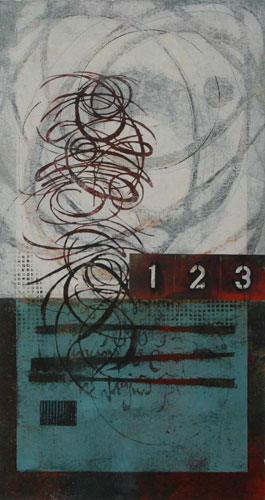
“Counting the Promises” Monotype with collage, 22″ x 12″
I was an adult, with five kids and a part time job, when I discovered printmaking. I was quickly hooked on this art form and spent many semesters at my community college learning the techniques and materials and, in the process, developing my own voice.
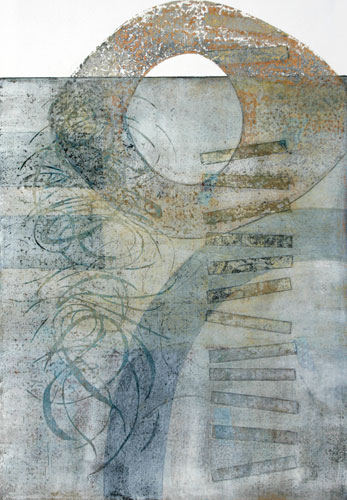
“Altruistic Aspirations” Monotype, 19″ x 13″
Because my husband is also an artist, some people ask if I print his work. No. What I make are original, hand-pulled pieces, not reproductions of something else. Basically, printmaking involves creating imagery on a “plate”, usually metal, wood, linoleum or plexiglass. The plate is inked and the image transferred to paper or cloth by running it through a press.
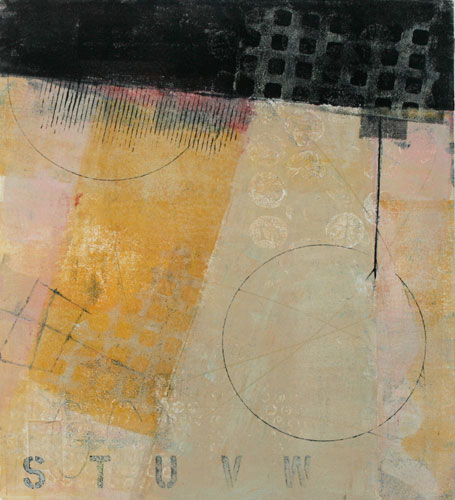
“Sustainable Peace” Monotype, 16″ x 14″
Early on, I discovered that I did not like making the same print over and over. At first it was a necessary part of learning the techniques, but I was soon changing each print with different colors of ink, combining plates or printing on handmade papers. Before long, techniques, materials and tools came together to open a new world of possibilities: monotypes.
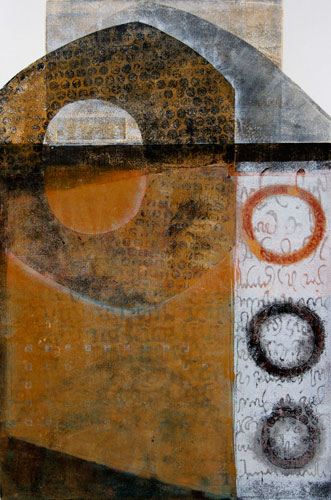
“Poetic Parapet” Monotype, 21″ x 14″
As the name implies, monotypes are one-of-a-kind prints. There is no image embedded in the plate. Instead, ink is applied to a nonporous plate, manipulated and then printed. Once the ink is transferred to paper, there will never be another print exactly the same. Monotype styles range from representational to abstract, from single pass printing to multi-layered prints. The possibilities are endless and exciting.
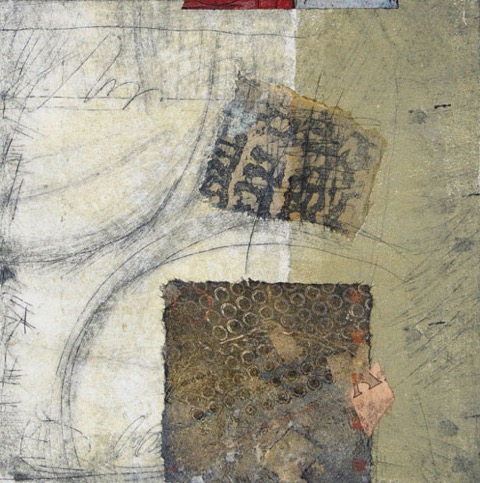
“Traces for Tomorrow” Monotype, Drypoint and Collage, 10″ x 9″
I print in layers, first developing texture, then embellishing the surface to find some focal point and create balance. For me, printmaking is an intuitive experience, a work of discovery. I don’t begin with any end in mind. Every layer is a problem to be solved. Each print seems to take a life of it’s own and it’s hard to keep a series, an intentional set of prints, together.
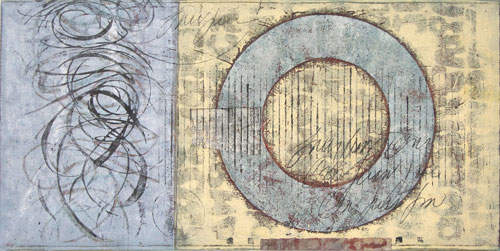
“Collaboration and Consensus” Monotype, 10″ x 20″
I enjoy carving linocuts and often incorporate them in my prints. Sometimes they are used to remove ink from the plate before printing, and sometimes used to add ink to the print for embellishment. Just as often, I use scraps of textured materials that I’ve found or stencils that I’ve cut from acetate to create texture and detail.
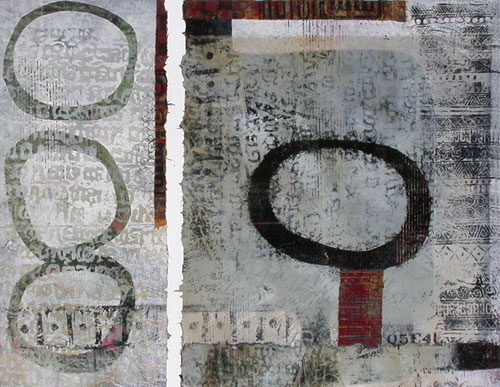
“Ascending Order” Monotype with Collage, 17.5″ x 22.5″
The use of imagined alphabets which I create as linocuts allows me to introduce text as a design element. I enjoy the beauty of alphabet forms without tying a specific commentary to the finished print. As it is, I am more interested in beauty than message, more drawn to mystery than representation. My goal is to create work that is balanced, with appropriate colors, marks, imagery and texture yet with an intimation of history. My best pieces involve discontent, risk and intuition. They carry a history of themselves, with hints of earlier incarnations.
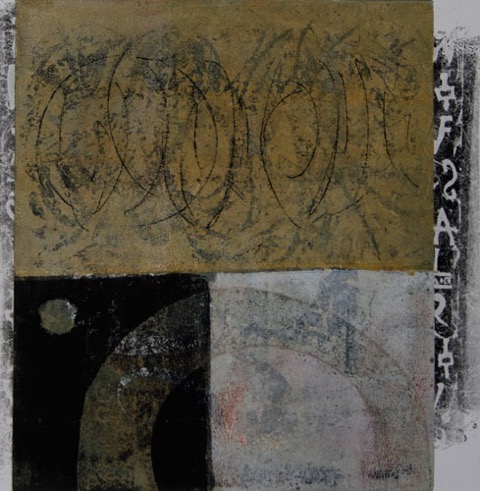
“Trespassing Time” Monotype, 11″ x 10.5″
These days I am trying to pull the format apart by using different sized plates, or perhaps printing a linocut or stencil beyond the edge of the image. Of course, the size of my prints is proscribed by the press. My studio press handles a 22” x 30” sheet of paper, the smaller press can print 19″ x 30″.
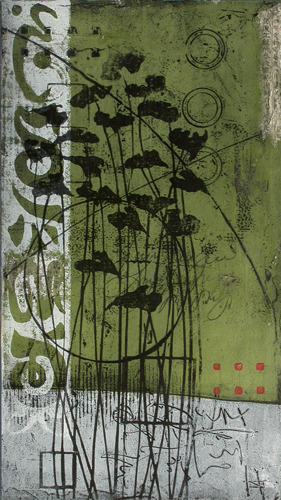
“Fugitive Mirage” Monotype, 18″ x 10″
My biggest challenge is bringing a piece to completion. Several times a year, my husband and I pack up my press and all our art supplies and escape to a borrowed home or a small rental studio to work for an extended period without interruption. Large blocks of time, something that’s elusive in my home studio, give me the opportunity to experiment, create and finish prints.
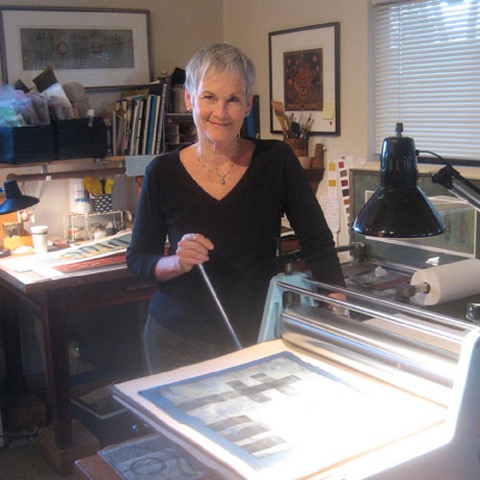
Artist Anne Moore and her press
I find the creative process is as much a mystery as the finished pieces. It’s one I hope to keep exploring and so I remain a student.
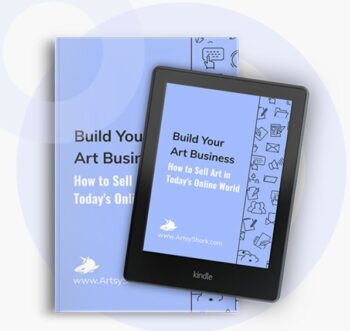
Your artwork is great. I enjoyed looking at every creation. You are an amazing & to find a block of time in your busy life indicates your desire to create art that is interesting & phenomenal. Thanks for sharing.
Thank you, Sandy, for your kind words. Yes, finding blocks of time to work is a challenge, probably something most artists face. Actually, I hardly know anyone who is not busy most of the time. You’d think that with all our time-saving devices we should have more time, not less. It does require deliberate choices to fit in the art.
We have reconnected and that is wonderful! So, I looked up your work and LOVE it all! Helen
I love your work and understand your process and that feeling of not knowing where the work is going. It is some time since I did mono prints and I often used collage and overprinting, looking at your work rekindles the creative juices. You are lucky to have your own press I have to pay to borrow but it is worth it.
I am a recent ‘convert’ and have come to know your work through Pinterest – yeah for the internet. Such a valuable connecting tool in these strange times. Love your work and your processes. I’m in the UK and have ordered your book from the States (Amazon) so looking forward to exploring your process more deeply. Keep creating!
Jac
I am fascinated by your prints and I love the abstract sense of your prints. I don’t have a printer.I am using a large gell plaet which I like.I am slow to start and don’t want to fail on my first prints,So I’m going into this slowly.I have been a felter and I am a painter.